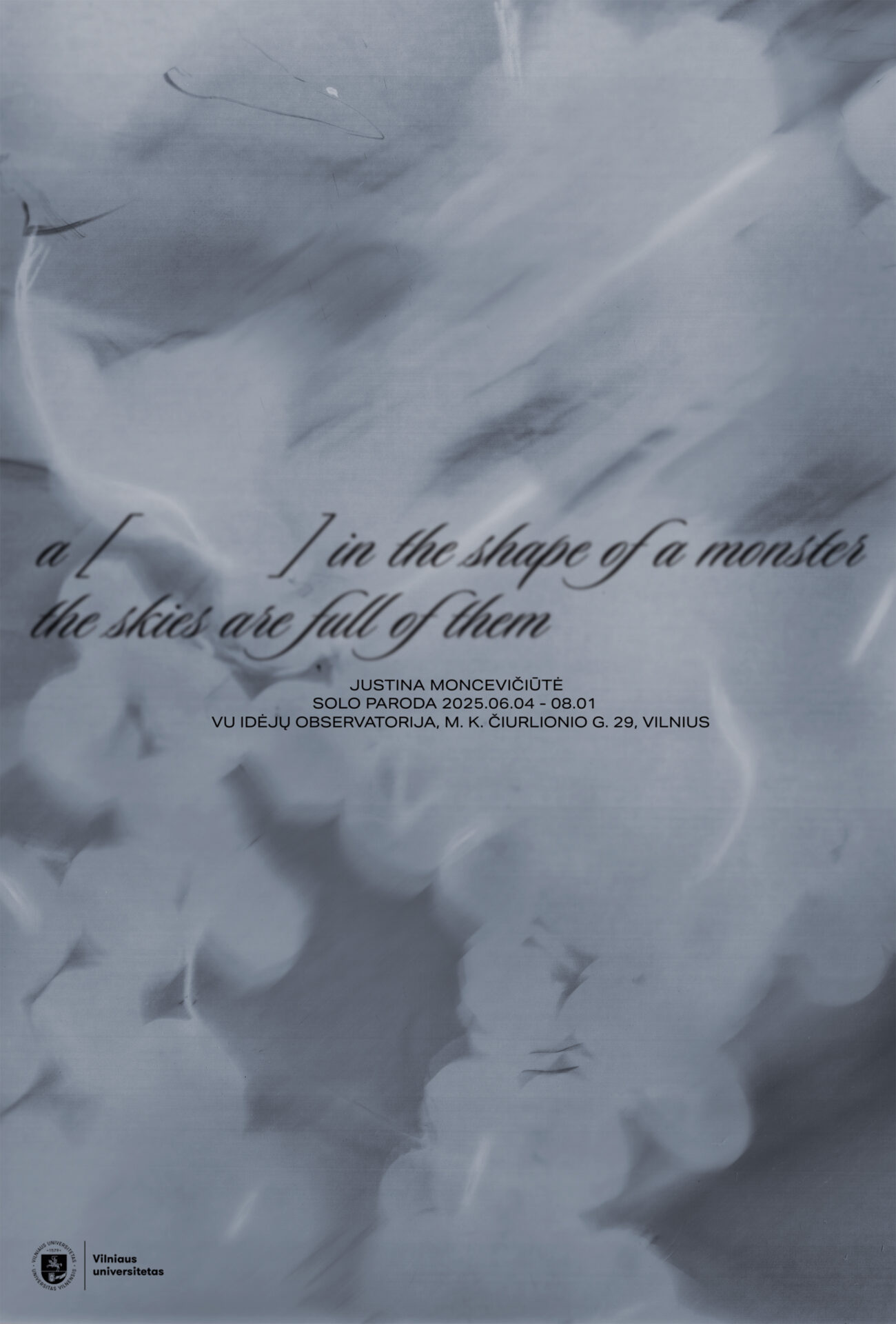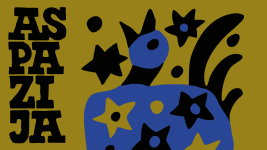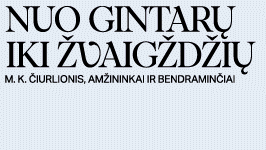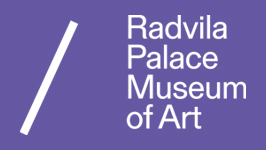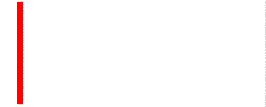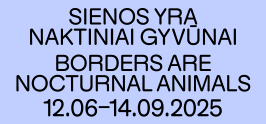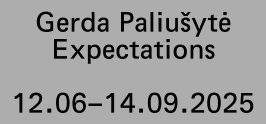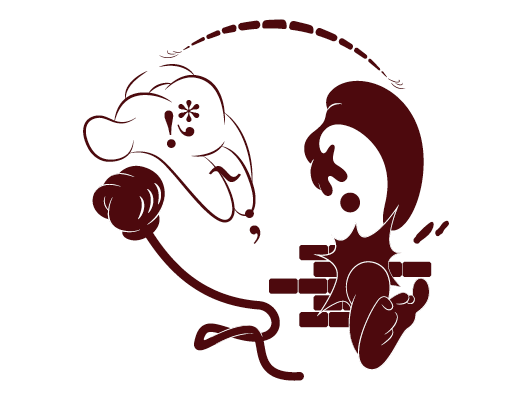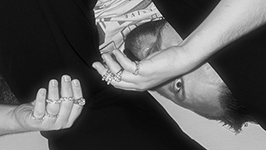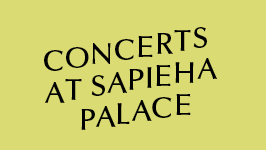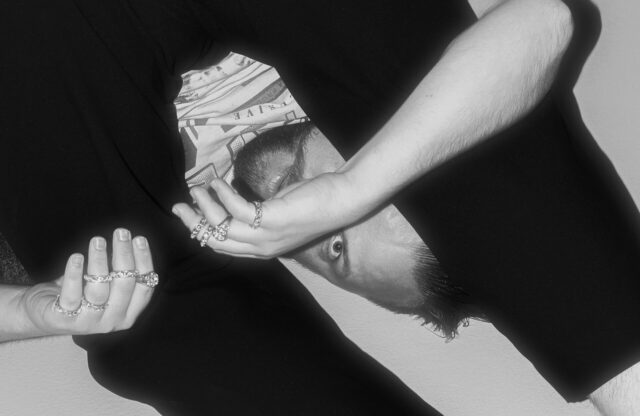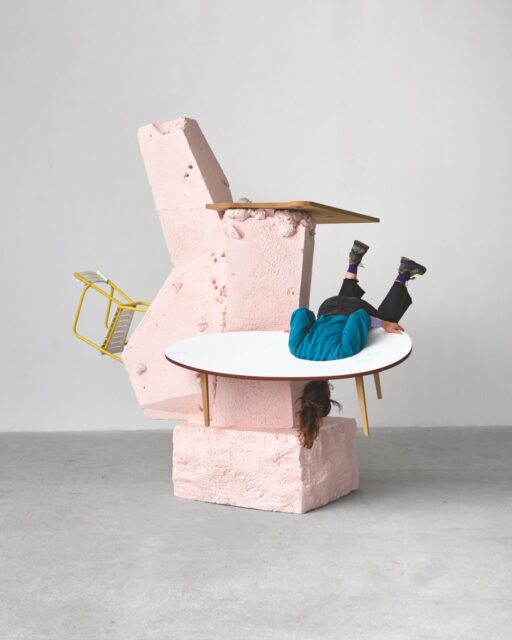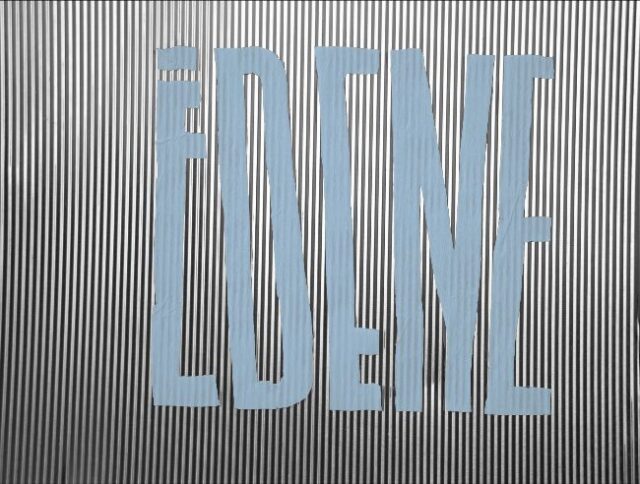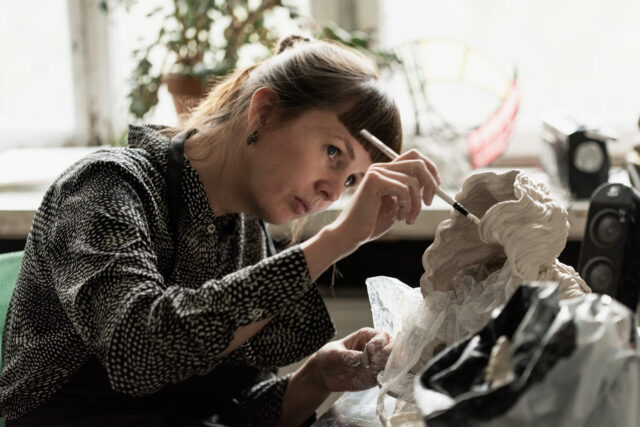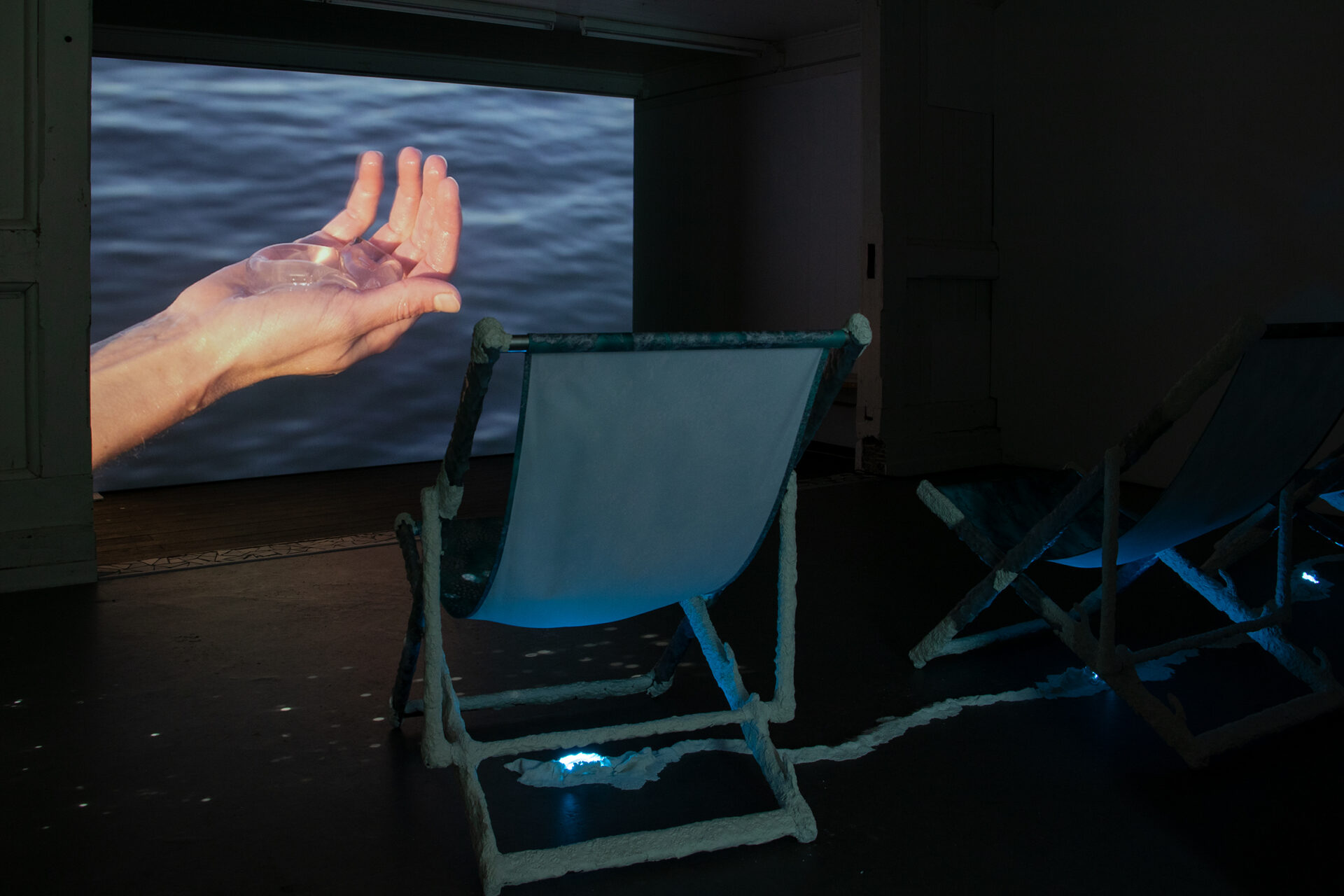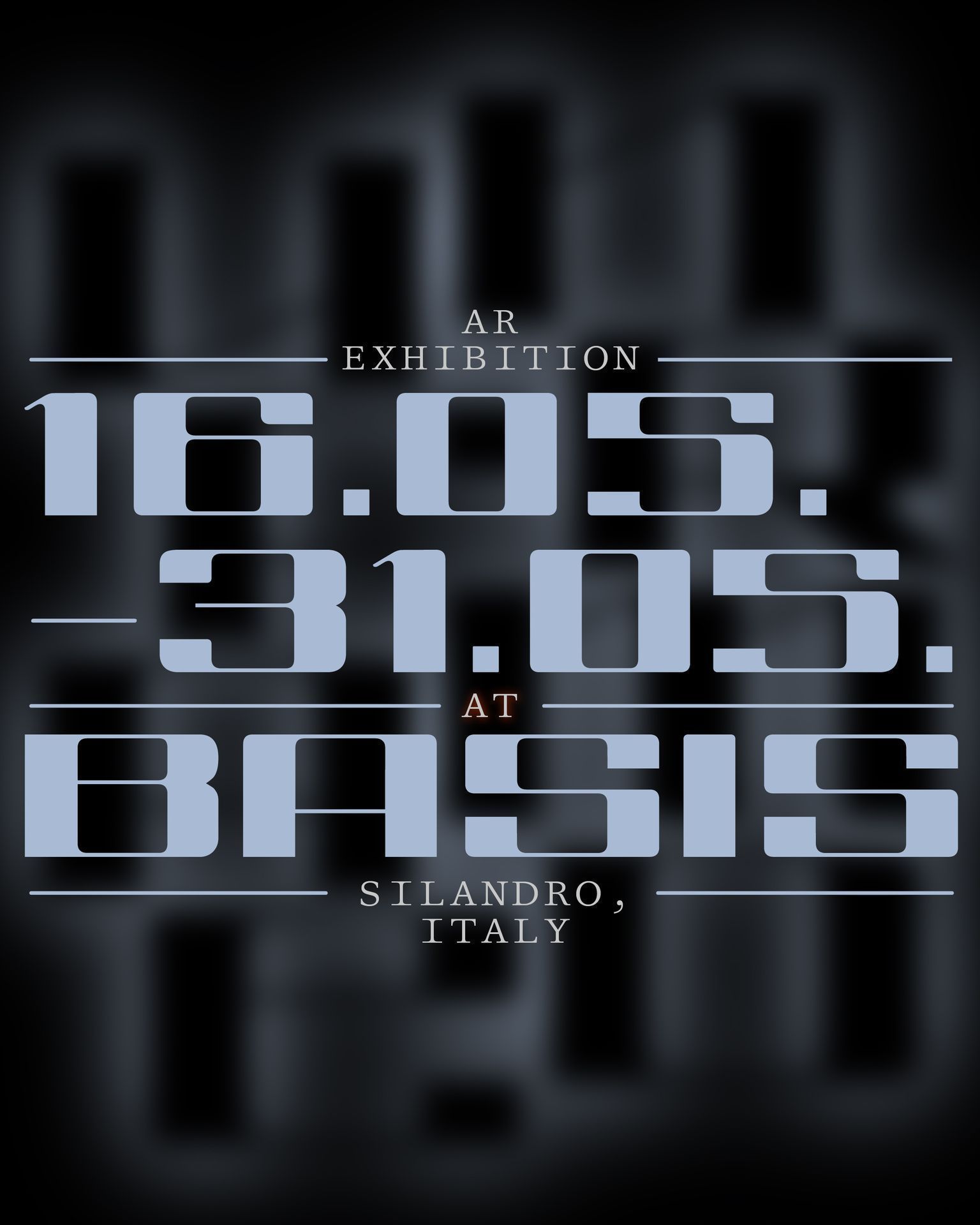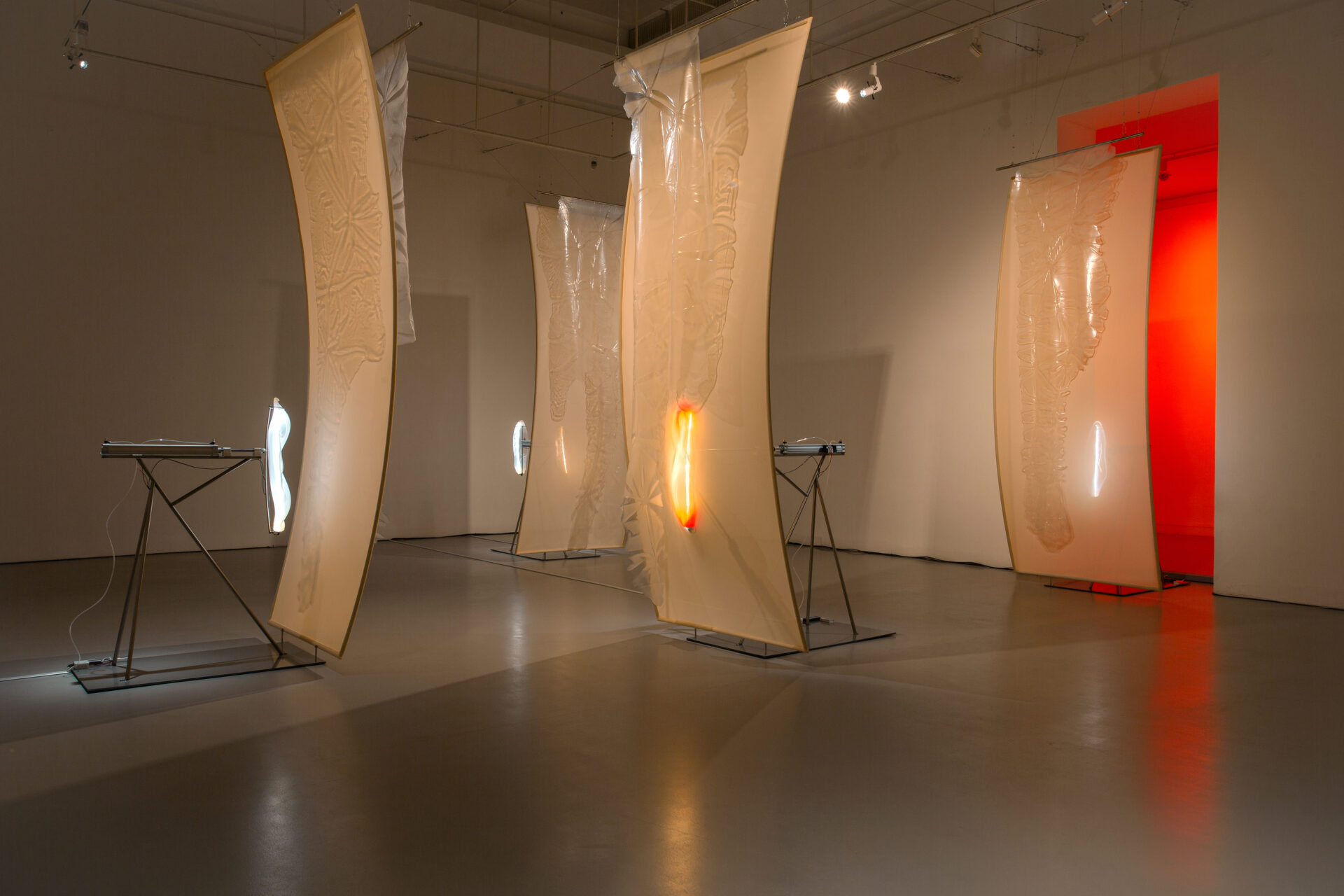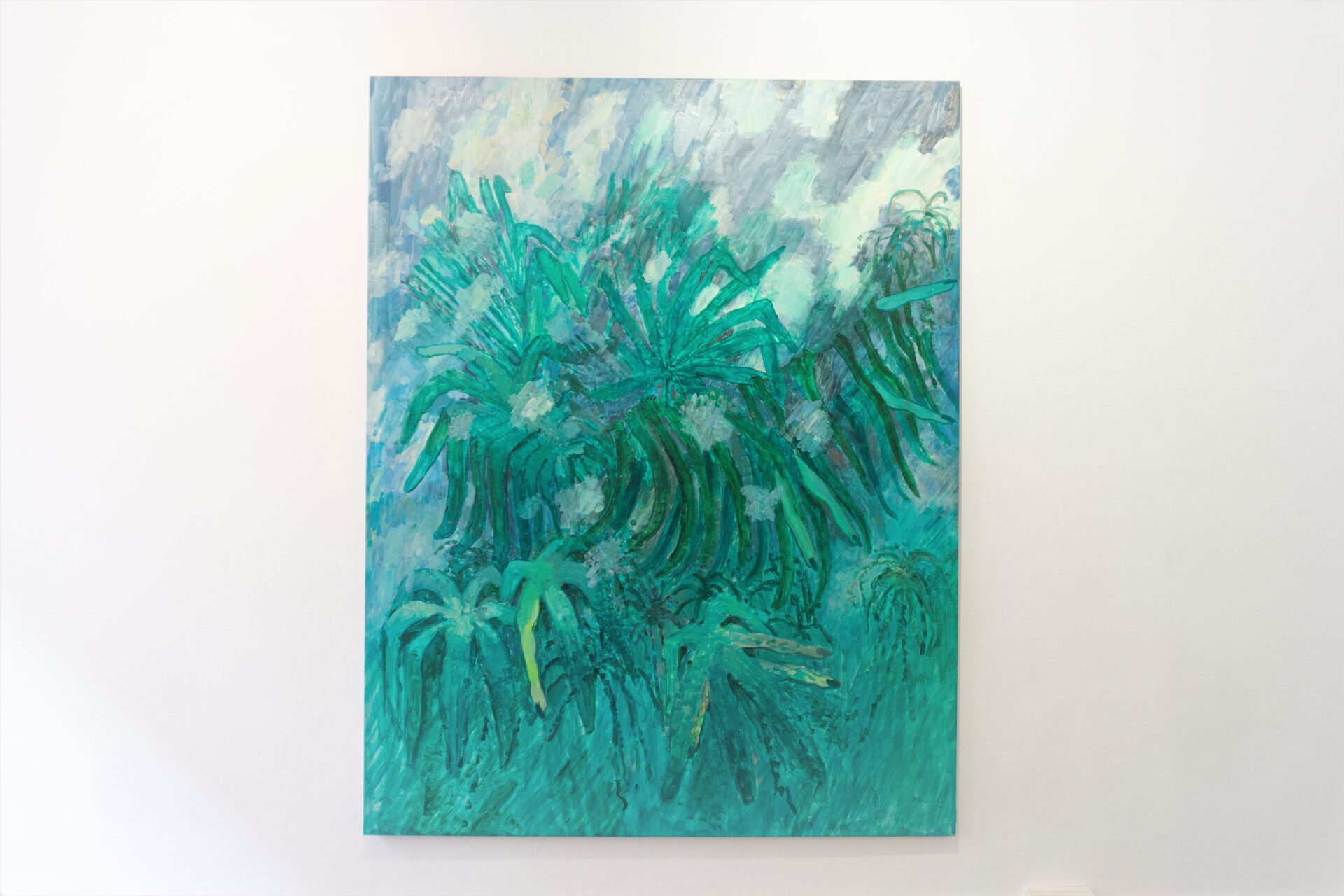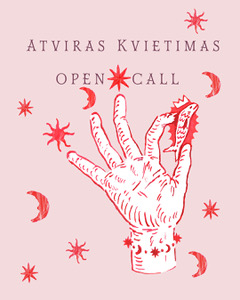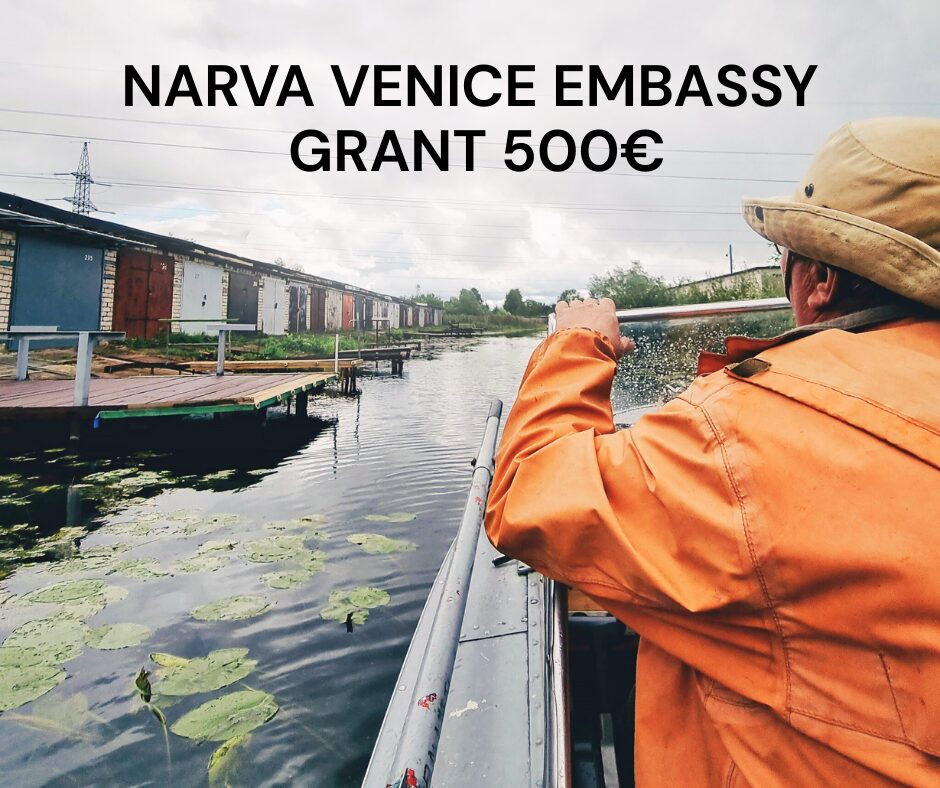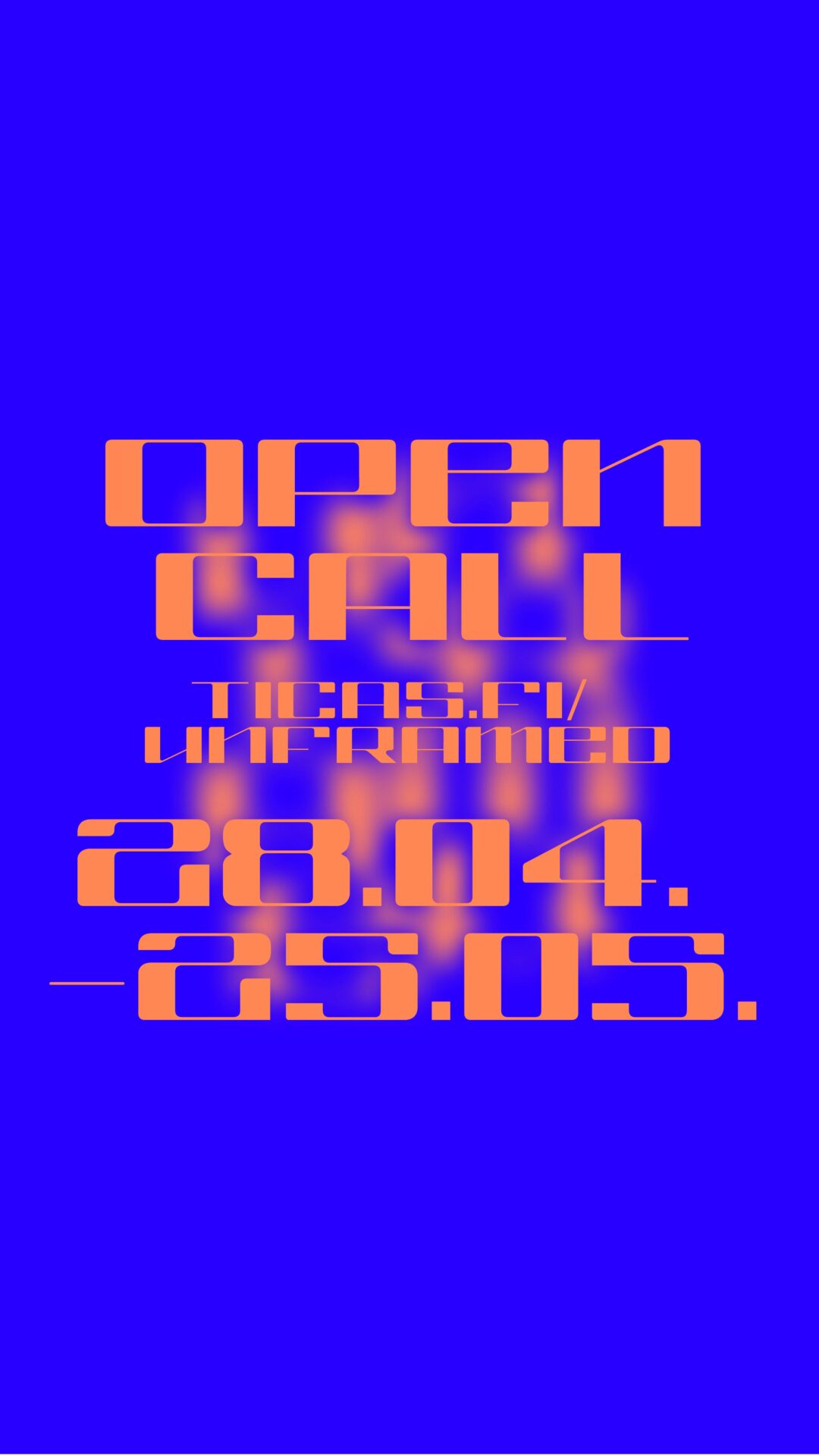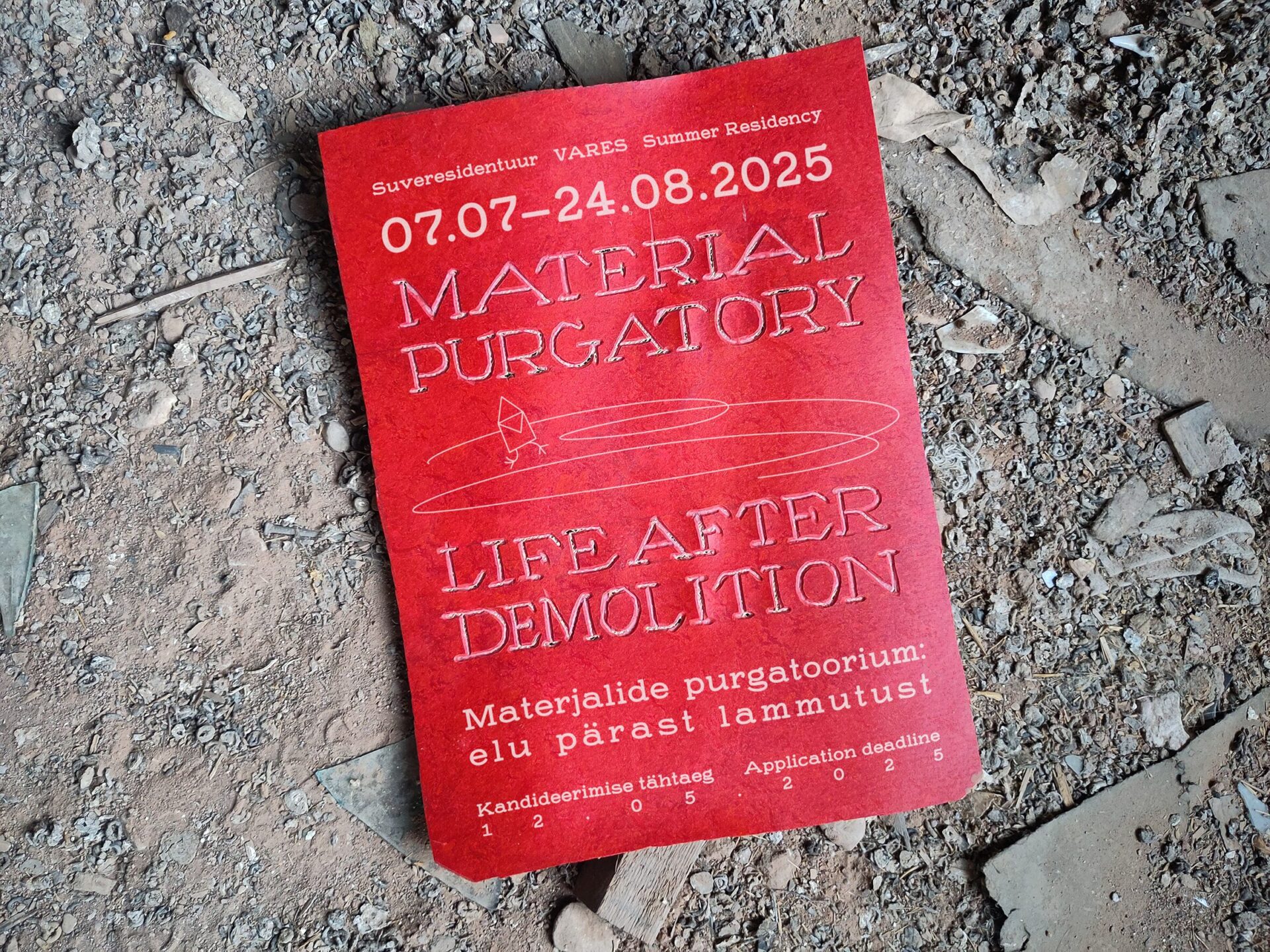The solo exhibition A [ ] in the shape of a monster / he skies are full of them by Justina Moncevičiūtė at the historical venue of Vilnius University’s Observatory of Ideas takes inspiration from the history of the site, literary references, and women astronomers. It’s the artist’s first exhibition in Lithuania.
On view are a selection of works that exemplify Moncevičiūtė’s practice, positioned at the intersection of sculpture and textiles. The exhibition’s choreography carefully places each piece throughout the premises. The artworks discerningly inhabit the Observatory, transforming it into an otherworldly heterotopia full of conceptual turns and subtle references to astronomy, science fiction and historical figures. The exhibition also extends beyond the interior spaces by including a site-specific intervention on the building’s façade.
The two sculptures from the Skūrà series dynamically morph: modular ceramic elements are connected into flexible, fabric-like volumes, and thus their shape and scale respond to the mode of display. The works are reminiscent of an animal skin slough (Skūrà III) or shredded leather pieces (Skūrà IV). Un-heimliche is made of enlarged porcelain spherical modules, it evokes a system of astronomical bodies that form an intricate, unintelligible network. Yet it also gestures toward the contours of a creaturely or human form. A different approach is taken in Cepheid RX Aurigae. The white, continuous roll of paper serves as a canvas, pierced with glass beads tracing astronomical diagrams, a nod to the firmament where astronomers track and map stellar constellations. The fluctuating lines and embroidery stitches are based on astrometrical data of proper motion, recorded in the early 20th century at the Observatory by Wilhelmina Iwanowska and her colleagues.
Also included in the show is the most recent work, [ missing title ], a sculpture consisting of glass beads, presented in a museum’s vitrine among scientific artefacts and tools. Its play of reflections and shimmering points to the ephemeral cosmic light on which the discipline of astronomy is based on. The common formal feature of the works is a void—an empty space existing between the singular modules—yet one which is intrinsic to hold them together, and which grants them their composition, appearance, and movement.
The leitmotif of void and emptiness resonates with the artist’s research into the history of the observatory, astron¬omy, and women astronomers. Wilhelmina Iwanowska (b. 1905 in Vilnius, d. 1999 in Toruń), a mathematician and astronomer, was one of the scientists actively involved at the Vilnius observatory until the end of the Second World War. After fleeing to Poland, she co-founded the renowned Nicolaus Copernicus University in Toruń and continued making seminal scientific contributions. Iwanowska’s predecessors—women who dedicated their lives to the science of stars—include Henrietta Swan Leavitt, Caroline Herschel, Maria Cunitz, Maria Clara Eimmart, among many oth¬ers. The marginal positions of these scientists attest not to their work or achievements but to a systematically biased redaction of the history of science that erased women and belittled their discoveries. Moncevičiūtė’s research into women astronomers goes way back to Hypatia, the late-Hellenic astronomer and philosopher of Alexandria, who was violently murdered by a mob, motivated by prejudice against the advancement of knowledge as well as educated women. The history of astronomy (and of all scientific disciplines, as a matter of fact) is thus incomplete, consisting of gaps, redactions, and voids.
But the science of astronomy also tells us about the importance of the emptiness: the expanse of the universe for the most part void —an empty vacuum in which matter is scattered yet interconnected into elements, materials, astronom¬ical bodies, and galaxies. Moncevičiūtė’s objects poetically translate this idea, memorializing those researchers who have been forgotten or eradicated but are nevertheless intrinsic to the collective weaving of knowledge.
The exhibition’s title is borrowed from a poem by Adrienne Rich (b. 1929, d. 2012 in US), The Planetarium (1968): “A woman in a shape of a monster / a monster in a shape of a woman / the skies are full of them.”
Justina Moncevičiūtė invites us to take a closer look: at how the fabric of beads is held together and falls seemingly effortlessly, yet demonstrates elemental laws of nature; at the linear science that has meaningful depths in its shadows and margins; at the night sky, its monsters, and its mesmerizing, all-captivating emptiness of expanse.
Justina Moncevičiūtė lives and works in Germany and Lithuania. She teaches at various universities and art acade¬mies in Berlin. Topics of women and labour, resistance driven by political and social marginalisation, and a post-disci¬plinary approach form the conceptual basis of her work.
Previous exhibitions include: 15th Westerwald Prize for European Ceramic Arts, Höhr-Grenzhausen (2024);
-T-E-X-T-I-L-E-. Artists and Their Works from the Universe of Fabrics and Interweaving Techniques, drj art projects and HAUNT//frontviews e.V., Berlin (2022); Original Bauhaus. The Anniversary Exhibition, Berlinische Galerie, Berlin (2019).
Vilnius University’s Observatory of Ideas
4 June – 1 August 25
Mon – Sat 9am – 6pm
Curator: Milda Dainovskytė
Exhibition text: Ignas Petraitis
Text editing: Christian Lerch
Translation of the text: Justina Moncevičiūtė
Installation: Greta Vileikytė
Poster and exhibition documentation: Gedvilė Tamošiūnaitė
